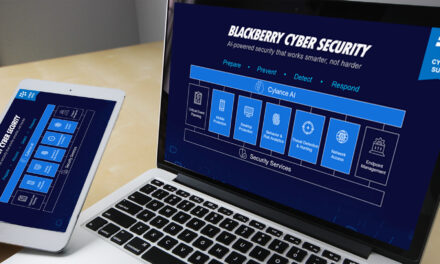With the pandemic turning our homes and cafés into part of the new ‘hybrid workplace’, the need for maximum corporate security is at an all-time high.
With remote workers signing on to public wi-fi routers in the mall and sharing laptops with their family members, IT teams are struggling to train colleagues in cybersecurity consciousness and to reinforce network hygiene.
For organizations to manage a distributed workforce that is not an added threat to the corporate network, the move to a Zero Trust security environment is becoming a pressing need.
A Zero Trust model centers on the belief that organizations should not automatically trust anything inside or outside its perimeters. Instead, anything and everything — from apps to devices to networks to vendors to gig workers and people — must be constantly authenticated, monitored, and tightly restricted in their access to resources on a justifiable-need basis.
Zero Trust approaches verification of user identities as a constant process of authentication, not just at log in. It not only considers traditional login credentials, but also biometric authentication, contextual factors such as location and device, and even behavioral profiling such as hand-eye coordination, individual scrolling patterns, and other user norms.
With Zero Trust, the default action is to always verify.
Zero Trust vs. productivity
The big challenge of Zero Trust is that the layers of authentication and scrutiny can create friction in worker productivity. As users, devices, and data continuously increase, businesses need to ensure that this continuous verification process does not increase the burden on the users.
One way to address friction is to add a Zero Touch element to Zero Trust, as cybersecurity firm BlackBerry has done. For instance, the firm’s employees, contractors, and partners can use their own devices to gain secure access to any application or file, and have access to many of the same capabilities they would have with a traditional corporate-owned and managed computer—all without compromising the security of the corporate networks and assets.
How is this Zero Touch commitment achieved? According to the firm’s spokesperson, ensuring that security and productivity go hand-in-hand is the use of AI-driven technology to detect and prevent cyber threats from executing when users open malicious URLs or visit spoofing websites designed to mimic legitimate pages.
This kind of Zero Trust mitigation addresses the very real fact that to err is human and mitigates against users falling prey to the kinds of COVID-19-related phishing and spoofing attempts we are seeing today. The American Red Cross, for example, uses BlackBerry® AtHoc® to communicate and make sure information is protected, managed, and delivered from a trusted source to any connected device and via any medium to their organization.
On the Android™ platform, mobile devices can be put on Zero Trust polices that do not hinder productivity. BlackBerry Spark® (the firm’s Zero Trust unified endpoint security and management platform) has a longstanding partnership with Google and is proud to be Android Enterprise Recommended. This means its advanced Android Enterprise product features and capabilities are certified by Google to deliver trusted enterprise guidance and support to ensure a consistent, successful deployment.
Through BlackBerry Spark solutions, organizations worldwide can deploy and manage devices securely and consistently across the entire organization, with ease and without impacting productivity.
According to the firm’s Senior VP and CISO John McClurg: “The security of Zero Trust had been an enemy to productivity of Zero Touch until now. With AI, Zero Trust can be achieved without the hassle of passwords, timeouts, special permissions, or multiple authentications.”
Up until recently, the adoption rate of Zero Trust worldwide had been slow, perhaps due to the immaturity of solutions that could counter the perceived or real usability issues. However, in these fraught times when cyber threats and state-sponsored espionage loom large, BlackBerry has rolled out a Zero Touch angle to the Zero Trust approach.
This ‘security without user difficulty’ can provide the stability and assurance that organizations and governments need, without the user experience hassles. From how they communicate, to how they access their mission-critical assets, to how IT teams mitigate cyber threats, this rethink in embracing a long-term, dynamic security model begins at the top and permeates downward to every endpoint.













